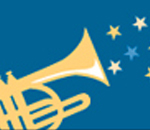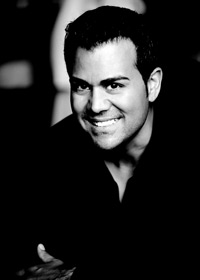 Practice Time: Drudgery or Enjoyment?
Practice Time: Drudgery or Enjoyment?
You no doubt have heard the expression “How do you get to Carnegie Hall?” the answer is: Practice! Practice! Practice! But that in itself is not good enough.
Music practice sessions should be well planned and thought out. Most people, especially students, need to know how to plan their practice time. This is where a music teacher or ensemble director comes into play—although they cannot make you a better musician, they can suggest ways for the musician to improve. “The improvement comes from yourself and mostly on your own time,” said Catherine Schmidt-Jones in a Guide to Great Home Music Practice.
How To Practice
Schmidt-Jones has a practice time “laundry list” that should include:
- Set goals
- Set practice times
- Warm-up
- Work on it
- Sight reading
- Cool down
- Evaluate
Each phase of this list should be seriously thought about in consultation with a private teacher, ensemble director or mentor. What you do and accomplish today will, in time, set the stage for where eventually you want to be in the future as a competent musician.
Space does not permit a discussion of each of the above elements. However, I do want to stress the importance of the “Work on it” component of practice time. Don’t practice the piece or passage incorrectly. By that I mean make sure the notes and rhythms are correctly played. If the piece is too difficult to play at the correct tempo, slow it down until you can play it right. Then proceed to pick up the tempo gradually until you reach the correct tempo. In your practice time remember to concentrate on what you need to work on. Sometimes there is a tendency to avoid what really needs work instead of concentrating on the easy sections. Don’t fall into this trap!
Meredith Laing in 9 Steps to Efficient Practicing offers these suggestions for making the most out of your practice time:
- Have a goal – decide what you want to accomplish and how you will go about it.
- Break it down – don’t try to tackle everything at once.
- Take it slow – start out about half speed and slowly increase until up to tempo. Use a metronome.
- Isolate issues – don’t practice the entire piece from start to finish when learning a new selection. Take it apart first, one section at a time.
- Repeat, repeat, repeat – practice the section until you can play it at least 10 times correctly.
- Make it harder than it is – use little tricks to make your music temporarily more difficult to play e.g. change the rhythm.
- Listen – mindless practicing is a waste of time; always keep your mind and your ears active and engaged on what the piece is supposed to sound like.
- Get a second opinion – have a teacher, conductor or someone knowledgeable give you some feedback if possible.
- Time it right – it’s a good idea to practice soon after a lesson or rehearsal when any problems are still fresh in your mind.
These suggestions by Laing are worth following and should be used in your practice sessions.
Make it Fun!
When preparing to practice your music it is important that your practice environment be comfortable. Try to practice the same time each day to form a routine. Practice when you are fresh and relaxed, not tired or stressed. Have a positive attitude going into the session. You will get good results if, and only if, good sounds habits are formed early and repeated often. Good luck and have fun practicing.
Please submit your questions and comments to banddirector01@comcast.net.
Visit our website at www.danvilleband.org for up-to-date information about the Danville Community Band.













